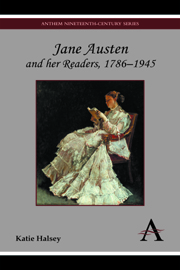2 - Jane Austen's Negotiations with Reading
from Part One
Published online by Cambridge University Press: 05 July 2012
Summary
Jane Austen was far from opposed to the central tenets of conduct literature, with its strong emphasis on New Testament Christianity, propriety and good manners, prudence, economy, modesty and good sense. Her early anti-heroine, Camilla Stanley, of Catharine; or, The Bower, for example, is described in terms that are strongly reminiscent of the conservative conduct-book writers of the late eighteenth century:
Those years which ought to have been spent in the attainment of useful knowledge and mental improvement, had been all bestowed in learning drawing, Italian and music, more especially the latter, and she now united to these accomplishments, an understanding unimproved by reading and a mind totally devoid either of taste or judgement.
Similarly, when Austen writes of Harriet Smith's riddle-book that ‘the only literary pursuit which engaged Harriet at present, the only mental provision she was making for the evening of life, was the collecting and transcribing all the riddles of every sort that she could meet with, into a thin quarto of hot-pressed paper, made up by her friend, and ornamented with ciphers and trophies’, she is both mocking Harriet's vapidity, and making a serious point about her intellectual deprivation. She does so in terms that reflect Hannah More's concerns that women are educated ‘exclusively, for the transient period of youth, when it is to maturer life we ought to advert’.
- Type
- Chapter
- Information
- Jane Austen and her Readers, 1786–1945 , pp. 37 - 56Publisher: Anthem PressPrint publication year: 2012

